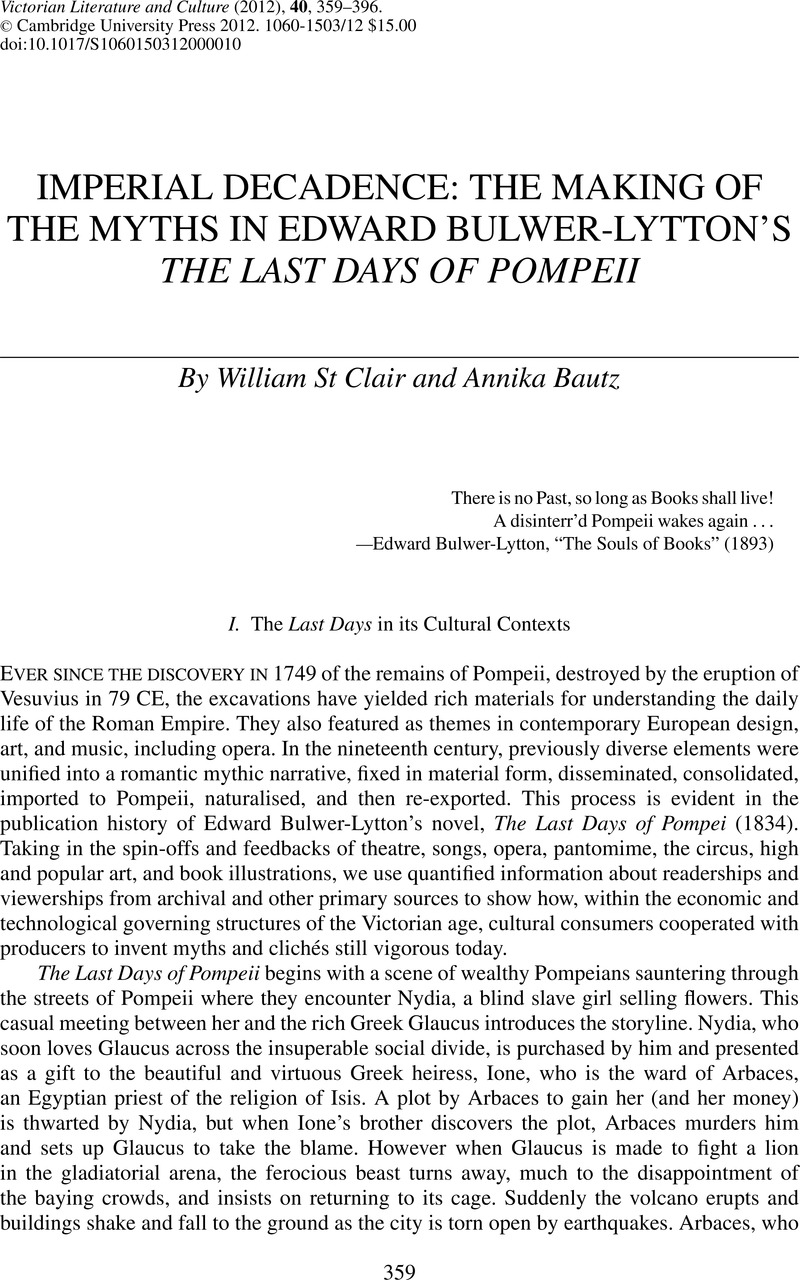Crossref Citations
This article has been cited by the following publications. This list is generated based on data provided by Crossref.
Sweet, Rosemary
2015.
WILLIAM GELL ANDPOMPEIANA(1817–19 AND 1832).
Papers of the British School at Rome,
Vol. 83,
Issue. ,
p.
245.
Ekström, Anders
2016.
Remediation, Time and Disaster.
Theory, Culture & Society,
Vol. 33,
Issue. 5,
p.
117.
Skinner, Jonathan
2018.
The Palgrave Handbook of Dark Tourism Studies.
p.
125.
Vassiliadi, Martha
Sylaiou, Stella
and
Papagiannakis, George
2018.
Literary Myths in Mixed Reality.
Frontiers in Digital Humanities,
Vol. 5,
Issue. ,
Wyke, Maria
2019.
Mobilizing Pompeii for Italian Silent Cinema.
Classical Receptions Journal,
Vol. 11,
Issue. 4,
p.
453.
2019.
Plagiarizing the Victorian Novel.
p.
186.
2019.
Romanticism and Illustration.
p.
1.
Abraham, Adam
2019.
Plagiarizing the Victorian Novel.
Pettitt, Clare
2020.
Serial Forms.
Christopher, Ashitha Mary
2025.
From Silence to Canvas: The Role of Artivism in Transforming Gender and Sexuality Norms.
Sexuality & Culture,
Vol. 29,
Issue. 1,
p.
97.



